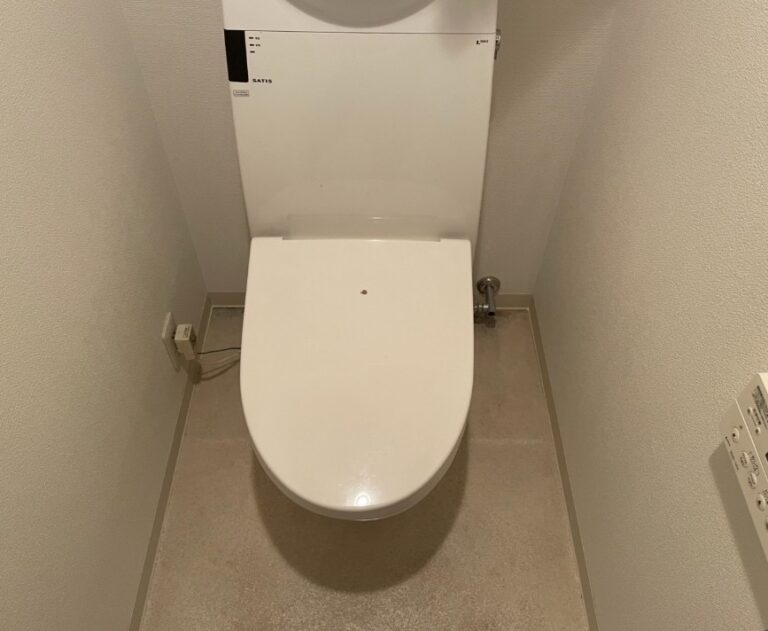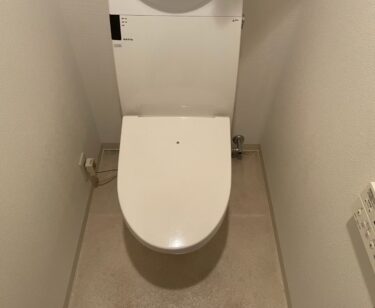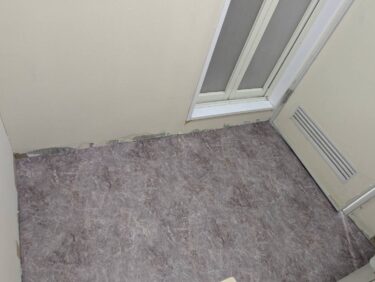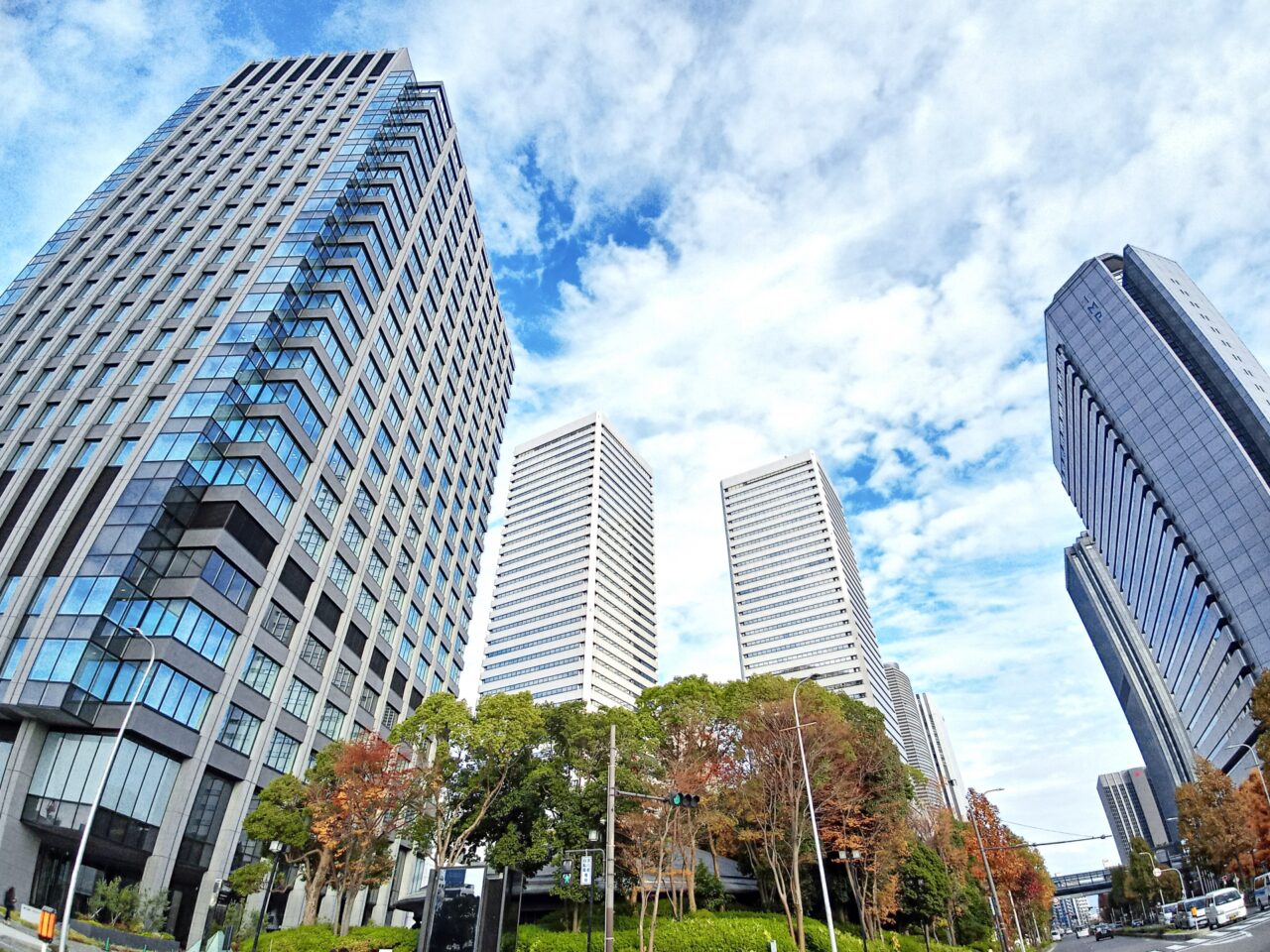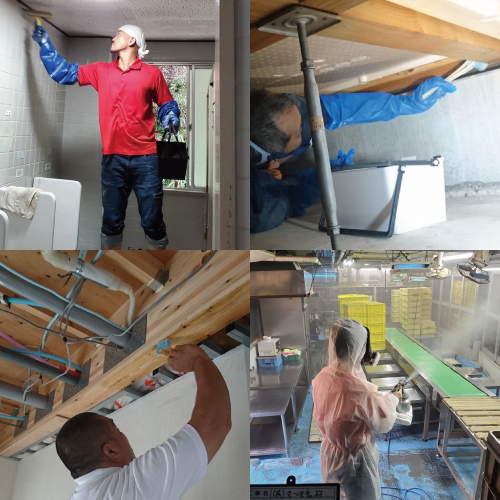This time, we will reveal the background of the mold problems that are increasing in high-end residential areas such as “Shukugawa x Minoh x Saga Arashiyama x Rokurokusocho”. We will find the cause of mold lurking in homes by looking at the climate and building structure unique to each region. By reading this article, you will be able to organize regional mold prevention methods based on the climate and lifestyle habits, as well as points to consider when requesting a specialist company, and you will understand safe installation techniques and measures to prevent recurrence. The benefit of reading this is that you will learn how to choose a reliable mold removal company and gain knowledge on how to receive reliable work without damaging the materials. You will have confidence in protecting your precious home for a long time.
1. Mold Issues and Prevention in the Shukugawa Area
Shukugawa, located in Nishinomiya, Hyogo Prefecture, is a scenic residential area known for its upscale homes. Despite its natural beauty, the area is prone to high humidity which easily fosters mold growth. Residences along the river or surrounded by dense greenery are particularly vulnerable during the rainy seasons. Leaving mold unaddressed can damage the structure and pose health risks, making early intervention essential.
1-1. Common Causes of Mold around Shukugawa Station
The area around Shukugawa Station is popular due to its convenient access via the Hankyu Kobe Line, and many residences are older wooden constructions. Such homes often lack sufficient insulation and airtightness, allowing moisture to accumulate and become a breeding ground for mold. The proximity to the Shukugawa stream adds humidity to the environment, and shaded areas receive less sunlight, hindering drying and increasing mold risk.
1-2. Appropriate Removal Methods by Building Type
Residences in Shukugawa range from traditional wooden houses to reinforced concrete structures. For wooden homes, mold often penetrates deep into the wood fibers, so surface cleaning alone is insufficient. Without removing the root, mold will recur. Concrete buildings face issues with condensation within walls. In such cases, moisture assessment and tailored remediation are needed. Professional diagnostics and treatment from experienced technicians are indispensable.
2. Mold Removal in Minoh City and Choosing a Contractor
Minoh City, located north of Osaka, is rich in nature and residential appeal. Homes situated in valleys or mountainous areas trap moisture, making them prone to mold. Modern airtight construction and homes with basements may hide mold in unseen areas, creating hidden challenges.
2-1. Contractor Landscape and Trustworthiness in Minoh
Several mold removal companies operate in Minoh, but not all provide high-quality service. Some only offer surface cleaning without addressing internal mold. When choosing a contractor, check for: extensive proven experience, clear safety information about cleaning agents used, and whether anti-mold measures are included. Before-and-after photos, reviews, and testimonials can be very insightful.
2-2. Pre-Inspection and Evaluating Estimates
Before requesting mold removal, ensure the contractor conducts a free on-site inspection and provides a detailed estimate. The estimate should specify treatment locations, the cleaning agents used, whether anti-mold treatment is included, and the post-work follow-up plan. Use of moisture meters or inspection tools during evaluation reflects the contractor’s technical competence.
3. Living Conditions and Mold Prevention in Sagaarashiyama
Sagaarashiyama, in Ukyo Ward, Kyoto City, is prized for its serene environment and traditional wooden residences. The high humidity and temperature variations in Kyoto’s basin climate create condensation indoors, especially in older homes lacking adequate ventilation. Mold can take hold in less visible areas like storerooms, ceiling voids, and beneath floors. In some historical residences, ventilation installation may be restricted, further compounding the issue.
3-1. Climate Conditions and Mold Risks in Sagaarashiyama
The Kyoto basin climate brings hot, humid summers and cold winters, causing frequent indoor condensation. Sagaarashiyama’s gardens and surrounding woodlands maintain high ambient moisture. Areas such as bathrooms, closets, and attic spaces are particularly at risk. Restrictions tied to scenic preservation also limit vent installations in some areas, exacerbating mold potential.
3-2. Recommended Maintenance Procedures for High-End Homes
In Sagaarashiyama’s upscale homes, natural materials like wood, Japanese paper, and plaster are common and sensitive to humidity. Annual or biannual professional inspections—including structural moisture checks—are strongly recommended. HVAC maintenance such as air conditioner cleaning and filter replacement should not be overlooked. Protecting valuable materials through regular maintenance preserves both aesthetics and property value.
4. Mold Risks in Luxury Homes of Rokkakusocho
Rokkakusocho, in Ashiya City, Hyogo, is among Japan’s most prestigious residential zones, home to sprawling estates. Sloping land and expansive yards can trap moisture from the ground or rainwater, increasing mold risk. Many properties include basements or semi-basements that often suffer poor ventilation, creating ideal conditions for mold growth.
4-1. Material-Specific Mold Removal for High-End Homes
Luxury homes often feature premium materials like natural wood, marble, or plaster, which are sensitive to harsh chemicals. Ordinary chlorine bleach can cause discoloration or deterioration. Effective mold removal requires pH‑adjusted specialized agents applied in mist form, protecting delicate surfaces. Post-treatment, applying preventive coatings ensures long-term protection.
4-2. Water Intrusion and the Importance of Early Detection
Even upscale homes are not immune to hidden water intrusion, particularly within roofs, walls, or subterranean spaces. Moisture in these areas can fuel mold growth before becoming visible, potentially causing structural damage or lowering property value. Regular inspections using moisture sensors or detectors enable early detection and timely intervention, preventing costly repairs.
5. Fundamental Mold Prevention and Choosing a Professional
While each region has unique climate and structural characteristics, effective mold control shares common principles. Key preventive measures include managing humidity, improving ventilation, and minimizing mold-friendly conditions like dust or poor airflow. Ultimately, choosing a professional capable of thorough diagnosis and remediation is essential for lasting results.
5-1. Preventive Measures: Ventilation, Humidity Control, and Dehumidification
Mold thrives in environments with moisture, warmth, and organic matter. Keeping indoor humidity below 60% is highly effective in prevention. During rainy seasons or winter, employ dehumidifiers and ventilate high-moisture areas like bathrooms or kitchens. In closets or storage spaces, using silica gel or moisture absorbers, and keeping the doors open periodically improves airflow. Additionally, maintaining a small gap between furniture and walls enhances ventilation and reduces mold risk.
5-2. Site Inspection and Proper Workflows by Experts
When selecting a mold remediation specialist, focus on those offering comprehensive services—from inspection to follow-up. Quality providers use tools like moisture meters and infrared cameras for precise diagnosis. Clear communication about the agents used and their impact on materials is essential. Confirming post-treatment anti-mold measures and warranty provisions helps ensure accountability and peace of mind.
6. The MIST Method®: Gentle Yet Effective Mold Removal
Conventional mold removal methods often include abrasive scrubbing or heavy use of bleach, which can damage surfaces and pose health or environmental hazards. The MIST Method® offered in Osaka, Tokyo, and Nagoya uses a gentle mist application tailored to building materials and mold severity, offering deeper cleaning without abrasion or harsh chemicals.
6-1. What Is the MIST Method®?
The MIST Method® customizes cleaning agents based on material type and mold condition. A fine mist is applied to penetrate the mold while preserving substrate integrity. This deters mold without scraping or bleaching, making it suitable for sensitive surfaces like wood, stone, or Japanese paper. The agents are non-toxic and safe for households with children or pets.
6-2. Advantages over Conventional Methods and Long-Term Prevention
Compared to traditional techniques, the MIST Method® minimizes material damage and includes anti-mold treatment to prevent recurrence. The cleaning agents disrupt mold cell membranes and inhibit regrowth, with effects lasting 6–12 months. Many providers offer follow-up maintenance or reapplication within this period. Objective before-and-after metrics also illustrate the effectiveness, giving clients confidence in the results.
7. Post-Treatment Maintenance to Keep Mold at Bay
Even after mold removal, without addressing the environment, mold can return. Effective long-term mold control depends on preventative maintenance and regular monitoring to preserve the treated condition.
7-1. Longevity and Application of Anti-Mold Treatments
Anti-mold coatings used with the MIST Method® have rapid effect and long-lasting results. They disrupt mold cell structures and inhibit regeneration. Duration may vary by environment, but most treatments maintain high efficacy for 6 to 12 months. In moist areas like bathrooms or basements, semiannual reapplication is recommended.
7-2. Maintenance Planning: Regular Inspections and Moisture Control
Periodic professional inspections help detect early moisture and mold signs in hidden areas. In tandem, installing dehumidifiers, improving insulation, and enhancing ventilation reduce mold risk. Proper furniture layout and storage practices also contribute to effective mold prevention. Ongoing advice and follow‑up inspections sustain a healthy indoor environment.
8. Regional Case Studies and Customer Reviews
When considering mold remediation, learning from others’ experience in regions like Shukugawa, Minoh, Kyoto, and Ashiya builds trust and clarity regarding contractor performance.
8-1. Examples from Shukugawa, Ashiya, and Nishinomiya
These areas report numerous mold cases involving wooden homes, canal-side mansions, and upscale condominiums. Many clients highlight mold in ceiling voids and basements during humid seasons. Reviews often note dramatic improvements after treatment and long-lasting prevention, especially where the MIST Method® was applied: “no recurrence after more than a year,” “materials preserved,” and “no damage to finishes.”
8-2. Cases from Minoh, Kyoto, and Sagaarashiyama
In valleys or older Japanese‑style residences, mold often hides beneath tatami, behind walls, or in flooring voids. Clients report satisfaction when mold is removed without invasive renovation: “eliminated odors in tatami rooms,” “no need to strip wall coverings,” and “interior materials remained intact.” These comments reflect the value of gentle yet thorough methods.
9. Price Estimates and Typical Cost Ranges
Cost is a key concern for many. Mold remediation pricing depends on infestation severity, structure type, material sensitivity, and the extent of anti-mold treatment.
9-1. Typical Rates by Area and Square Meter
Standard mold removal costs range from ¥5,000 to ¥15,000 per square meter. Light cases start around ¥5,000; moderate to heavy or delicate-surface treatments can exceed ¥10,000. Including anti-mold treatment, total costs often reach ¥20,000–¥50,000. Premium areas like Shukugawa or Rokkakusocho may command higher rates, especially for inaccessible spaces.
9-2. Key Estimate Inclusions and Warranty Considerations
Choose contractors offering free on-site inspection and detailed estimates outlining treated areas, agents used, anti-mold coverage, and process timeline. Some reliable providers offer warranty periods for recurrence-free service. Avoid firms with vague pricing or absent aftercare. Comparing quality, safety, and support is more important than simply choosing the cheapest option.
10. Frequently Asked Questions Before Inquiry
Many clients are unfamiliar with mold remediation, resulting in questions or uncertainties. The Q&A below provides clarity before reaching out.
10-1. When DIY Is Acceptable and When Professional Help Is Needed
For minor surface mold—such as light growth on window frames or seals—home remedies (sprays and alcohol-based cleaners) may suffice. But widespread mold, recurring infestations, or mold hidden in walls, ceilings, or under floors require professional treatment. If mold odors persist or family health is impacted, prompt consultation with a specialist is advised.
10-2. What to Do If Mold Reappears after Treatment
If mold reoccurs, contact your contractor promptly for a reinspection. Many reputable firms honor free re-treatment within the warranty period. If recurrence stems from new water intrusion or areas outside the original treatment zone, additional fees may apply. Reliable contractors explain this in advance. Ongoing environmental control—like ventilation and humidity management—is vital. Following professional maintenance recommendations significantly reduces risk of recurrence.
Company Introduction: Kabibusters Osaka, Kabi-Tori Reform Tokyo & Nagoya, and Taikou Kensou Co., Ltd.
Kabibusters Osaka and Kabi‑Tori Reform Tokyo & Nagoya form a nationwide specialized mold removal network serving upscale residential properties. Utilizing the proprietary MIST Method®, they offer advanced mold remediation tailored to building materials and mold conditions. The method effectively eliminates mold without abrasion and includes long-lasting anti-mold treatments. These services are safe for children and the elderly and respect both occupant health and material preservation. Regional teams in Osaka, Tokyo, and Nagoya combine local climate insight with professional consistency.
Taikou Kensou Co., Ltd.: One-Stop for Mold Removal and Renovation
Taikou Kensou Co., Ltd. integrates mold remediation and full-scale renovation services—a rare combination in the industry. When mold damages interior structures or surfaces, our team coordinates mold removal using the MIST Method® followed immediately by renovation work. This synergy reduces construction time and overall cost, avoiding situations where mold removal occurs without subsequent restoration or mold recurs post-renovation.
About Our Renovation Services
Taikou Kensou is a full-service renovation contractor working on houses, apartments, stores, and offices. Our team brings decades of experience and craftsmanship to realize our clients’ visions. We handle interior remodeling—flooring, wall coverings, layout adjustments, and storage enhancements—combining usability and aesthetics. We also deliver bathroom, kitchen, and utility upgrades using high-functionality, energy-efficient fixtures, contributing to cleaner and more enjoyable living environments.
Energy-efficiency upgrades, such as improved insulation and window replacements, are also part of our repertoire. These measures help reduce humidity and condensation, preventing mold growth while improving thermal comfort. We provide seismic reinforcement, barrier-free modifications, and assist multi-generational families with safety and accessibility-focused renovations. For historic or older homes, we offer bespoke renovations that preserve original materials while integrating modern functionality.
Taikou Kensou Co., Ltd. and the Kabibusters/O‑Tori Reform teams are your trusted partners for comprehensive mold remediation and renovation solutions. If you’d like to protect your home, preserve valuable materials, and enjoy a healthier living space, please reach out to us. Our skilled professionals in Osaka, Tokyo, and Nagoya are ready to provide full support.

